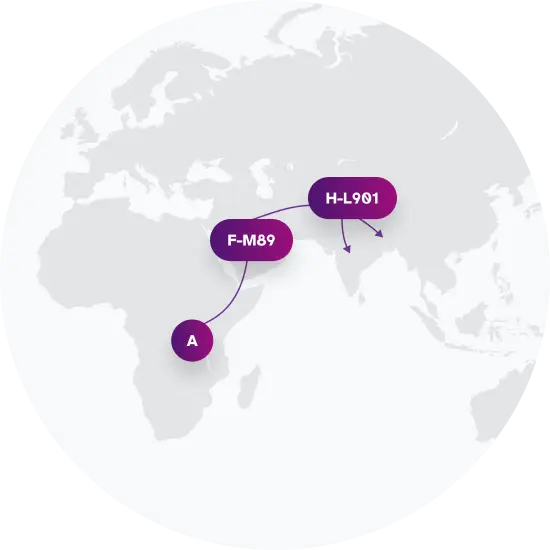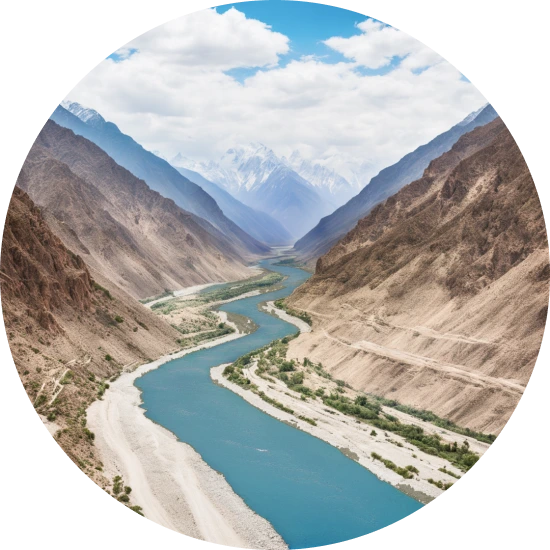Haplogroup H-P96
What is Paternal Haplogroup H-P96?
Haplogroup H-P96, also known as Haplogroup H-L901 (Y Chromosome Consortium long-form label), is a genealogical group of lineages defined by unique genetic markers present on the Y-chromosome. Your paternal haplogroup, or that of your father if you do not have a Y-chromosome, paints a picture of your ancient origins and the migrations of your ancestors. Although your paternal haplogroup reflects just one of your many ancestral lineages, it carries information about that lineage over tens of thousands of years.
Haplogroup H-P96 is descended from haplogroup H-L901. Among 23andMe research participants, haplogroup H-P96 is commonly found among populations in the United Kingdom and Ireland.
It's important to note that your haplogroup doesn't define your current ethnic identity; rather, it provides an insight into your deep ancestry on the paternal side.
 Paternal Haplogroup Origins H-L901
Paternal Haplogroup Origins H-L901Top Surnames with Haplogroup H-P96
For surnames with sufficient representation in the data, these percentages represent the frequency with which each surname is found in individuals exhibiting this genetic marker.
Haplogroup H-P96 is linked to some of the first Eurasian migrants
When modern humans first began to migrate from Africa to Eurasia 50,000 to 70,000 years ago, they likely followed two routes. The first travelers followed the southern coast from the Arabian Peninsula all the way to Southeast Asia. Another group likely split off within the Arabian Peninsula or at the Persian Gulf and headed inland to the sea of grasslands in the Middle East and Central Asia. Members of both groups reached India within only a few thousand years, where they followed rivers inland and throughout the subcontinent. In fact, between 45,000 and 20,000 years ago, India likely supported most of the humans that were alive at the time.
 Some of the first Eurasian migrants followed the Indus River inland.
Some of the first Eurasian migrants followed the Indus River inland.